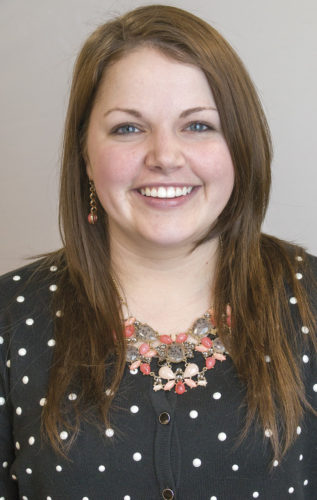Imagine watching your cows’ herd health decline while the somatic cell count continued to rise. Now picture bringing in a wide array of dairy industry professionals, only to have them all pointing toward a different solution that never seemed to solve the problem completely. This was a reality for more than 11 years for Joan Hohag and her husband, Dean, on their 175-cow operation in Waverly, Minnesota. The problems started escalating in 1999, when they put in a new facility. Minnesota requires an equipotential plane, which is installed in a concrete floor, connected to the electrical grounding system and supposed to reduce stray voltage.
And because of that equipotential plane, the Hohag’s utility company said the herd health problems couldn’t possibly be a result of stray voltage, and the company’s test results confirmed it.
Instead, the couple was sent on a wild goose chase.
“They pointed a finger at everything,” Joan Hohag says. “Water, feed, management, management, management. We knew it wasn’t us, but we didn’t know what it was.”
The couple switched feed companies but continued to see problems in the herd. Cows would get sick, particularly in the summer months, and wouldn’t respond to treatment, unlike in their old facility where treated cows typically bounced back quickly.
Hohag says the death loss also increased during the summer months, but was unacceptably high year-round.
Things got interesting for the Hohags when they looked into robotic milkers in the winter of 2010. They talked with their feed company representative, who had just spoken with another farming family with robotic milkers. Due to stray voltage problems, the robotic milkers became a nightmare.
The feed rep advised Joan and Dean to check out their electrical system, to which they replied that the utility company had tested and found no issues.
Two days later, the Hohags read about another producer battling with stray voltage.
“So I called [the producer] and asked, ‘What’s going on here?,’” says Hohag. “He told me, ‘No, no, no. You don’t let the power company test the stray voltage. You call a consultant.’”
Hohag immediately went to work on contacting independent stray voltage experts to look at their operation. In the meantime, she had the power company come back out to test, and they still found nothing.
Only a few days later, two independent consultants found quite a different situation on the farm.
As the testing began, the Hohags discovered their stray voltage problems were affecting more than just the milking herd. An older facility where they raised heifers was also experiencing a stray current.
“Our whole herd was exposed to stray voltage from the time they were born,” she says.
Moving forward
Hohag says once they reported the consultants’ findings back to the power company, it was quick to cooperate. The company installed neutral isolators within just a few days and has worked with the couple since to make improvements.
This level of cooperation is huge, says stray voltage consultant Chuck Untiedt in Lakefield, Minnesota. Unitedt has worked with several utility companies and many dairy producers, including the Hohags, to help solve problems and work out agreements, noting that things become particularly stressful when these problems end up in courts.
“All it takes is a commitment to truly cooperate with everyone involved,” Chuck says. “Nearly every dairyman that I have spoken with that went through the stray voltage litigation states that the stress of litigation is worse than the stray voltage itself. If we simply sat down and did the testing to determine the source and then took action to remove it by making the corrections needed, we would all be better off.”
In the case of the Hohags, those corrections and the cooperation of the utility company immediately paid off.
“We noticed improvements right away,” Hohag says. “And the results have been phenomenal. Our somatic cell count dropped to under 200,000, which has never happened before on this farm. In December 2010, we got a somatic cell count premium for the first time in a number of years.”
Although the Hohags cancelled the robotic milkers project when they discovered the severity of their stray voltage problems, it is a goal they’re working toward.
“A stray voltage cow doesn’t get better, and when your cows crash, you have to rebuild from heifers up,” Hohag explains.
Hohag knows there is still work to get their farm 100 percent isolated from stray current, but she says it’s a relief knowing how to go about those improvements and who to ask for help.
Pay attention
Prior to seeking out consultants, the decade-long search for a solution to their herd health problems had taken its toll on Joan and Dean.
“My husband would tell you he was the biggest skeptic you could have imagined on this stray voltage issue,” Hohag explains. “We had been led down this lane so many times by so many different people in the last 10 years. And until he actually saw the improvements himself, he didn’t trust that this was going to work.”
Luckily, Joan paid attention when situations similar to theirs crossed her path. She says that’s the advice she passes along to fellow producers – to pay attention and to not be afraid to spend the money to research solutions. And, she says, to use an independent consultant, rather than to rely on the testing of the utility company.
“Everybody thinks they don’t have a problem,” she says. “But until you prove you don’t have a problem by a properly trained professional, you don’t know whether you have a problem or not. Every farm should be tested for this.” PD
Having stray voltage problems?
Reach out to one of these experts:
Dr. Hugh Chester-Jones
University of Minnesota
chest001@umn.edu
Jerry Lush
Stray Voltage Consulting
Brookings, SD
(605) 695-3328
jlush@brookings.net
Chuck Untiedt
Dairy farmer
Lakefield, Minnesota
(507) 839-3739
uuc@mncgp.com

-
Emily Caldwell
- Editor
- Email Emily Caldwell






